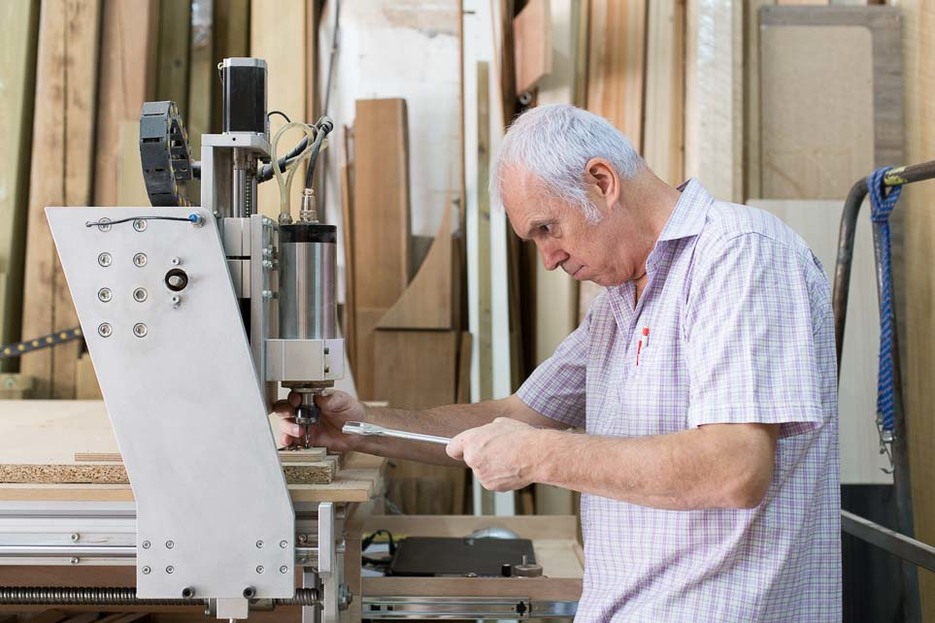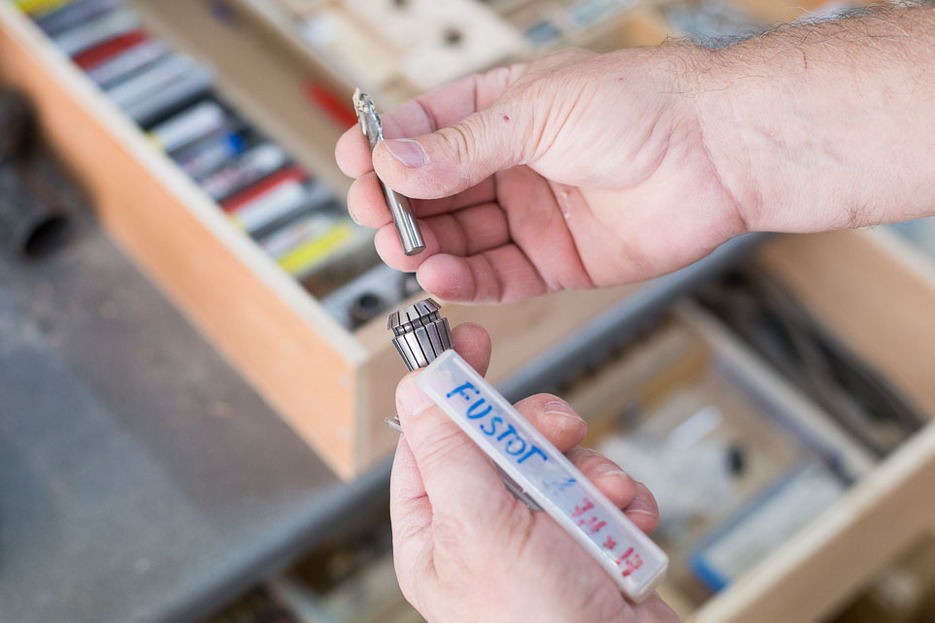Sergi Beltran - A lifetime of woodworking in Barcelona
From woodworking in Barcelona to recovering from the 2008 financial crisis. Sergi tells us his story of resurrection.
Sergi is part of an enthusiastic global community of designers, DIY’ers, hackers and tinkerers engaging with resources shared openly on Opendesk. He’s a third generation woodworker with family ties going back to the mid 20th Century. We met through Jose, designer of the Slim Chair, and loved Sergi’s story that’s embedded in the history of Barcelona. While he’s not an official Opendesk maker (yet!) we couldn’t help but share his tale of triumph - charting his life through the city’s most exciting and challenging times.
Growing up around sawdust and shavings, Sergi was always destined for the workshop, following in the footsteps of the father and grandfather.

Sergi: I was born in Barcelona 62 years ago back in the 1950s. Ever since I first picked up a hammer and chisel, I’ve loved the world of wood. With a family history in woodworking, I grew up surrounded by wood planks, shavings and sawdust.
My workshop is in the Camp de l’Arpa neighbourhood of Barcelona, only eight blocks from the Sagrada Familia Temple and four from the Sant Pau Hospital.
Opendesk: You’re the third generation of woodworkers in your family. Tell us more about your history and how you started your own workshop.
Sergi: My grandfather and my father, who was very young at the time, opened a workshop in 1948 quite close to where I am now. I joined their workshop in 1976 when I was only 21 years old. It was a well-stocked workshop, with state of the art machines including tape saws, planers, shapers, chain drills, belt sanders and a press.
I opened my own wood workshop only two years later. I also resumed my studies as an interior designer at the School of Applied and Artistic Crafts in Barcelona, which I juggled with running the workshop. I also ran an antique shop for one year as a way to entertain my love for all things old and wooden.



Opendesk: Tell us about the Sagrada Familia and the links you have with the iconic church.
Sergi: The Sagrada Familia is the most significant piece of Architecture in Barcelona. The first stone was laid in a ceremony on St Joseph’s day, 19 March, 1882. It signaled the start of construction, beginning with the crypt located under the apse, following the Neo-gothic design drawn up by the Sagrada Familia’s first architect Francisco de Paula del Villar y Lozano. Following disagreements, Lozano resigned from the post of chief architect and the vacancy was filled by Antoni Gaudí, one of the most famous figures of Catalan culture and world architecture. He went on to spent over 40 years designing the Temple of the Sagrada Familia until his death on 10th June 1926.
My grandfather was well connected with the church, where he had a workshop installed inside the temple itself. The Spanish Civil War from 1936 to 1939 caused the destruction and theft of much of the Sagrada Familia’s original furniture. My grandfather was tasked with replacing this furniture, the most symbolic elements being the confessionals.
Opendesk: Tell us about the challenges you and many others across Europe faced with the financial crisis in 2008.
Sergi: Before 2008, I ran a much larger workshop with 11 full-time staff and an office on the outskirts of Barcelona to help cope with demand. Everything went very well until 2008. Then the “crisis” hit affecting my business along with the businesses and livelihoods of many across Europe. First, I held out thinking that the crisis couldn’t last much longer. I was proven wrong when everything turned against me: the tax authorities, the banks, the workers and the suppliers. With great effort, I was able to resist until 2012 when I was forced to close the company, apply for bankruptcy and let my staff go. It was a difficult time for many across the city and cut far deeper than business, into peoples’ personal lives, families and friends.



In 2013 I started on the road to recovery and settled in a place where I could start fresh with a new workshop but keep the name of my old company Fustot Bel SL. I am currently the administrator and sole worker. I produce wooden products as before but on a smaller scale. I have a mid-sized custom built CNC machine which I am very proud of which has opened up many opportunities for me, including my work with Jose Pacheco. It’s a 3-axis CNC machine built with love by a very talented freelance engineer I know. It’s customised to fit my workshop and, whilst basic, is more than enough for my needs.



Opendesk: Tell us about your relationship with Jose Pacheco. How did you both meet?
Sergi: I met Jose Pacheco a while back when he was looking for a maker in Barcelona to produce his Slim Chair. We’ve worked together ever since with more and more orders arriving for his beautiful chair each year. In the future, I hope to formally register as an Opendesk maker and bring Jose’s chair to more customers in Barcelona.



I am a huge fan of Opendesk and regularly explore the furniture collection in an effort to pick up new design tips. Currently, the small size of my machine means I’m unable to register as an Opendesk maker, the minimum requirement being an 8’x4’ bed size. I hope to register in the future when I have a larger machine.
Opendesk: What do you think your grandfather and great-grandfather would think of the work you are now doing with new technologies such as your CNC machine? How have you seen woodworking change in your lifetime?
Sergi: If my grandfather woke up saw the tools of the modern wood workshop he might have another heart attack! Modern tools have allowed us to greatly increase capacity and productivity. But the traditional work of old is still very important. My father is now 91 and still a master carpenter, working entirely with hand tools. No-one can do the work he does. His skill is a reflection of decades of training in his field. We’d do well to learn from these experienced craftspeople so that their skills and traditions can continue through future generations.

If you’d like to register as an Opendesk maker, it’s important you’re able to meet the qualifications steps below. If like Sergi, you have a smaller CNC machine, we’d still love to hear from you with a view to understanding your business in more detail.
- Must have an 8’x4’ (2440mmx1220mm) 3 axis CNC router.
- Access to FSC or equivalent Baltic Birch, B/BB, 3B, or S/BB grade quality).
- Able to do double-sided cutting.
- Able to work with laminated plywood.
- Able to sand furniture to a fine finish (at least grit 320).
- Have the facilities to oil or spray finish furniture.
- Must be able provide in-house or outsource delivery and on-site assembly.
Register as an Opendesk maker or contact us to find out more
Photography by Josh Worley




